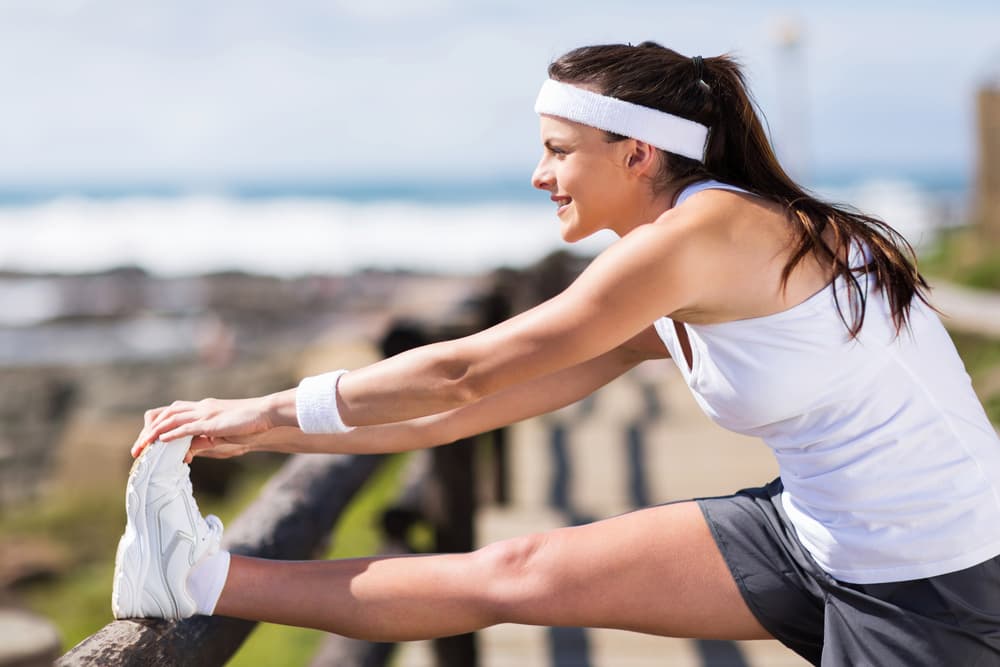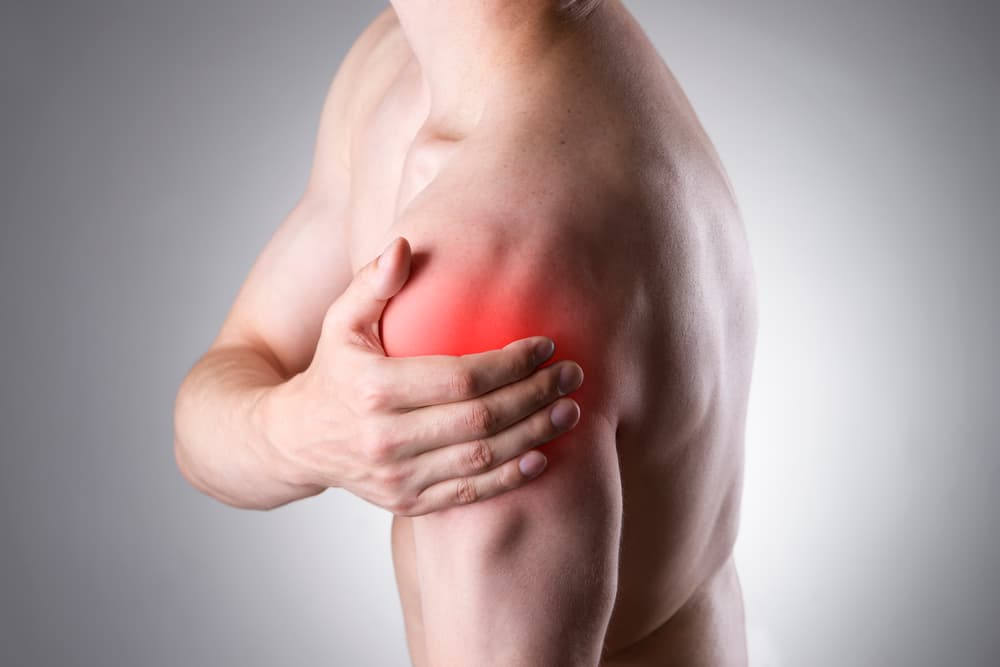Getting physically fit is not easy. For some people, just the idea of getting up early to do a 30-minute jog is challenging already. Actually doing it and committing to it is even harder, especially for those who are not used to doing physical activity.
But as we all know, working out has a lot of benefits not only physically but mentally. There are many reasons why people don’t exercise regularly; it could be due to busy schedules, injuries, laziness, they don’t feel the need to do it and for some, they hate the idea of having sore muscles afterwards.
After a good workout, it is normal to experience some pain or soreness in the muscle. The muscle pain can usually be experienced after 24-72 hours and not during a workout. This is called delayed onset muscle soreness (DOMS) or muscle fever, which is very common with novice or elite athletes after athletic training. But even experienced bodybuilders can suffer from DOMS.
However, it should not be confused with acute muscle soreness wherein pain is felt while working out or right after. It is the burning sensation in muscle when doing an intense workout. The pain is usually gone after exercising.
Now that we know the difference between delayed onset muscle soreness and acute muscle soreness, let’s delve deeper into DOMS and learn about its symptoms, causes, treatment, and how to prevent it from happening.
DOMS Symptoms
Symptoms of DOMS can occur after 12-24 hours after exercising as stated by the American College of Sports Medicine. The pain will peak within 24 to 36 hours after exercise.
The common symptoms of DOMS are the following:
- Muscle fatigue
- Muscle stiffness
- Limited range of motion
- Sore muscles
- Muscle tenderness
- Temporary loss of muscle strength
Causes
Exercise-induced muscle damage, eccentric muscle contractions, and resistance training can lead to DOMS. Small microscopic tears1 occur during high-intensity exercise which can cause inflammation which is a symptom of DOMS. Eccentric exercise is the most common trigger for DOMS. Running downhill is an example of eccentric movement.
Treatment Strategies
As mentioned earlier, delayed onset muscle soreness is normal and it is nothing to be concerned about. It usually goes away on its own after a few days. However, there are some ways to help alleviate the pain while waiting for the damaged muscles to be repaired. These treatments may also prevent further injury and a visit to the doctor.
1. Massage
One of the most effective ways to lessen the pain caused by DOMS is by massaging the muscles. Some studies reveal that people who had a massage after an intense exercise program experienced less muscle fatigue and soreness compared to those who did not get a massage.
It is ideal to get a post-workout massage after 48 hours. While not everyone can get a massage after each exercise, self-massage is advisable. You can apply a lotion or oil on areas such as thighs, shoulders, arms, calves, and buttocks.
2. Cold Water Immersion
Cold baths after a workout also work when suffering from delayed onset muscle soreness. Many athletes do this as self-treatment. Immersing your body in cold water with temperatures between 50-59°F can help repair muscle damage. Do this for at least 10-15 minutes, making sure the whole body is submerged in the cold water.
3. Warm Bath
If you think you can’t handle a cold water bath, then a warm bath will also work. A warm bath or heat wraps can help lessen muscle stiffness and pain caused by DOMS. A lot of sportspeople do this after an athletic performance.
4. Topical Pain Reliever
Topical analgesics that are menthol-based or contain arnica seem to work in managing DOMS. This type of analgesic is intended to relieve muscle pain. Topical painkillers are applied on the sore areas of the body topically. When using topical pain relievers, be sure to follow the instructions found in the packaging, particularly on how often and how much to apply.
5. Eating Anti-inflammatory Food
There are some foods that are believed to help lessen DOMS, although there is not much research about it yet. But some anti-inflammatory foods you can take as a post-workout meal are the following:
- Fruits such as apples, berries, and banana
- Whole grain bread and cereals
- Oats
- Quinoa
- Fatty fish such as salmon, herring, tuna, and sardines
- Turkey
- Greek yogurt
- Eggs
- Protein shakes
- Peanut butter
- Nut butter
- Avocado
6. Over-the-counter Pain Reliever
For some, taking some non-steroidal anti-inflammatory drugs can help ease pain caused by delayed onset muscle soreness. However, based on research it may be the most less effective treatment.

Prevention
While DOMS cannot be prevented completely, there are ways you can do help lessen the severity of pain and discomfort. Here are some helpful tips to consider.
1. Warmup
Most people, especially the newbies or those who do not have experienced trainers to guide them tend to dismiss warming up before their exercise program. However, it is important to get the muscles moving to prepare them for a more intense exercise. Dynamic stretching is recommended as a warmup. Perform some dynamic stretching for at least 5-10 minutes before workout.
Examples of dynamic stretching for warmup are:
- Hip circles
- Arm circles
- Lunge with a twist
Dynamic stretching can be done before starting with any workout routine. It is beneficial for weightlifters to improve their muscle performance and leg extension power. Athletes such as soccer players, basketball players, and sprinters may find doing some dynamic stretches to be beneficial. Before performing cardiovascular exercises such as swimming or running, doing this can help warm up the muscles and lessen the chance of injury.
2. Staying Hydrated
Staying hydrated is vital to treat DOMS from getting severe. Since muscles contain a high percentage of water, it is important to hydrate yourself each workout, especially if you are performing a new exercise program. Whether it is mild or severe dehydration, it can have a big impact on the severity of your DOMS. Drinking lots of fluids during exercise may lessen the symptoms, however, it will not prevent DOMS completely and will not accelerate muscle damage.
3. Cool Down
If there’s a warmup, there’s also what we call to cool down which is done after a workout routine. Ending your cool down with static stretching can help reduce muscle soreness, and clear out lactic acid. In addition to that, it can improve muscle and joint flexibility. Foam rolling on swollen muscles has also proven to relieve tension after exercising.
4. Slow Down
While some may get excited about increasing the intensity of their workouts, try to slow down. Increase your workout’s intensity level gradually, especially if you don’t want to experience severe symptoms of DOMS. Taking it slow can help build your endurance, strength, and improve performance safely with less muscle tissue damage.
5. Wearing Of Compression Garments
There are a lot of benefits from wearing compression clothing during and after a workout. This can also be beneficial if you are performing a new exercise routine. Some of the benefits of compression garments are less inflammation, less soreness, and less fatigue which are all symptoms of DOMS. Wearing compression clothing on the most affected muscle groups can lessen muscle damage.
6. Keep Moving
It is normal to stop exercising or move around when you experience DOMS. However, it may not be the best course of action to alleviate symptoms of DOMS. However, performing light exercises2 such as low-intensity swimming, cycling, walking, and yoga can help reduce muscle soreness.
But if you feel that you are having a bad case of DOMS, that doing a light exercise is not possible, then it is okay to take a rest the whole day to give your muscles some time to repair.
7. When To Visit A Doctor
While DOMS will go away on its own after a few days, in rare circumstances, some people may need to visit a doctor. According to the American College on Sports Medicine3, you should see a nurse or a health practitioner if you are suffering from intense pain caused by DOMS. A doctor will be able to provide medical advice on how to treat it.
DOMS doesn’t usually last for more than 7 days but if you are still experiencing it after a week, you should see a doctor. Other alarming symptoms of DOMS are:
- Severe swelling in the legs and arms
- Abnormally dark urine
- Muscle spasm, sharp pain, numbness, and tingling sensation

Frequently Asked Questions
1. What is the cause of delayed onset muscle soreness?
Delayed onset muscle soreness is caused by any high-intensity exercise. High-intensity exercise can produce minuscule tears in your muscle fibres. Your body reacts to the injury by increasing inflammation that leads to delayed onset muscle soreness.
One type of exercise that can trigger DOMS is eccentric exercise. Eccentric exercises are slow, stretching contractions that target a particular muscle. One good example is when you slowly sit in a chair. The slow movement of you from standing to sitting is an example of an eccentric contraction.
2. Is delayed Onset Muscle Soreness a good thing?
Delayed onset muscle soreness is actually an indication to lower muscle activity to avoid further muscle trauma. It can be a good thing because a certain degree of soreness can be interpreted as a good workout. But it is not always a good sign or indicator of an effective exercise.
When you exercise regularly, your body tends to adapt to the soreness and you will feel less sore after the workout. Feeling less sore doesn’t mean that your workout is not effective. Just always remember to listen to your body. Take a complete rest when you have a terrible DOMS, to give your muscles time to repair.
Conclusion
Anyone can experience DOMS; even the healthy adult population can suffer from it. However, there is nothing to worry about and expect that you will experience it every now and then since it is a type of muscle conditioning.
When you do a new physical activity, your body adapts to it and the pain felt after exercising is natural. This means when you perform the same exercises targeting the same muscle group, the pain will be lessened as your muscles adapt to it. There is no way to prevent DOMS; all you can do is to try some of the prevention tips mentioned above.
Sources
1. Gail Olson. Healthline. What Is Delayed Onset Muscle Soreness (DOMS) and What Can You Do About It?
2. Karoline Cheung, Patria Hume, Linda Maxwell. Delayed onset muscle soreness: treatment strategies and performance factors ,Sports Med. 2003;33(2):145-64. doi: 10.2165/00007256-200333020-00005.
3. Braun W, et al. (2011). American College of Sports Medicine. Delayed onset muscle soreness (DOMS).